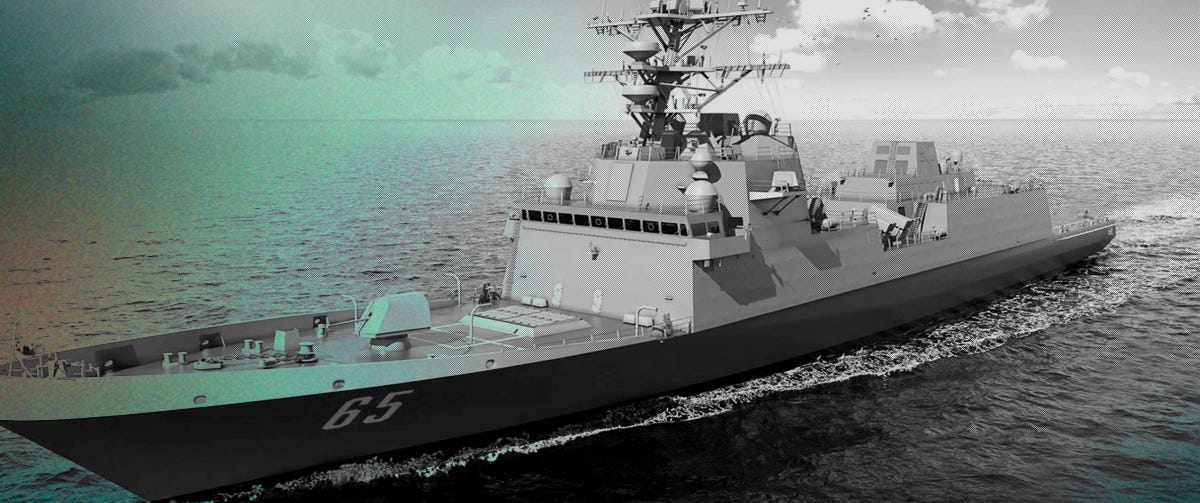There is a few issues plaguing the Constellation class frigate program, although I am not sure if I would hang my hat on the design changes being the worst or even most damaging one.
The program was given an incredibly optimistic and frankly unrealistic initial timeline, which they've proceeded to hoist themselves with now that reality has set in. There was dramatic amounts of pressure to get a design picked, modified and rolling that was built domestically. The bigger issue in all of this is skilled shipyard manpower availability. The yard building the ships is facing major personnel shortages/retention (something like 500~ white/blue collar employees across the work force?) due to the fact they are still building the LCS alongside an LCS derivative frigate for the Saudi's, so there simply isn't the resources to really throw at the Constellations right now. There hasn't been the funding given to the yard to really get the ball rolling in this department and the second planned yard has seemingly had little progress thus far.
I've mentioned it elsewhere but it is common for ships to have fabrication of parts and construction itself start before the design is completed, same for modifications to the design ongoing throughout parts of the building process. The Arleigh Burke class destroyers alongside the Zumwalt class destroyers are recent examples, with the first 5 ships of the former being built with the design at 50% completion while the latter started construction at 80% design completion. As long as you can keep things reasonably under control, there is no catastrophic issues with doing this. I question if many of the people casting aspersions have looked into the original program requirements instead of what defence reporters put out in the media. The USN wanted a baseline design that was proven and in service to use as a STARTING POINT so they could work in their own equipment in order to provide interoperability with the existing US fleet/its equipment. They were never going to just take the Italian FREMM, file the serial numbers off and call it a day, that is simply fiction. Risk and potential issues from large amounts of high capability and untested technology was being mitigated through the use of an existing base design and existing or pre-tested equipment fitted, not by limiting modifications as much as possible to retain commonality.
Similar to the CSC program, whatever design which won the US FFG(X) program was inevitably going to see considerable design changes to make it a relevant combatant in our changing modern and future battlefields.
Look above at an figure on module design percentage complete on USS Constellation as of October, 2023. Notice how the most important sections of the hull, the machinery spaces, are the most mature compared to sections like the stern and mast. Even the least developed parts of the design AS OF OCTOBER 2023 are at the same level as the first 5 Burke class destroyers upon initial construction. The most important sections of the design and the sections that will be worked on first have generally the most advanced design progress. The sky is very much not falling in this aspect.
Design changes are also expected considering that outside of baseline civilian (and NATO warship standards I believe?) standards, each nation generally has their own specifications to what they want ships and their systems built to. Nations modifying foreign designs to incorporate fundamental national standardized things that NEED to be changed like the jump from European 230v to US standard 120v electrical is not abnormal. This includes actual hull construction and damage control standards but can vary tremendously down to things as seemingly minute as the layout and square footage of berthing/accommodation spaces. This is before you get into the changes from nation to nation that each Navy might
want, but not necessarily
need. The drop in commonality from the baseline FREMM design to Constellation of 85% to 15% seems horrid but when you realize that the French and Italian variants of the FREMM only have a 15% commonality with each other, it puts things into a far less dire perspective.
Claims of unplanned weight gain eating into growth margins of the ship are partially false as well. The US has specified that 300t of additional weight is being added to the ship to bring it up to USN survivability standards, the commonly cited GAO report does not take this specified and planned for weight into consideration and tacks it onto the category of "unplanned" as the tonnage figure they use was released prior to this additional weight being announced as already worked into the design. There is a lot of doom and gloom circulating from people skimming the GAO report and either quoting it out of context or taking it at face value without addressing the facts. It is the GAO's job to criticize US procurements and while they are generally good at their job and a valuable asset, this constant negativity clouds their judgement at times and can produce slanted or misleading reports.
There is an excessive amount of doom and gloom surrounding the Constellation class right now, the low cost figures and over optimistic timeline set expectations incredibly high and those same expectations have caused people to absolutely lose their minds when things aren't going entirely smoothly.



www.seaspan.com






www.lookoutnewspaper.com


www.navytimes.com



cdrsalamander.substack.com

behindthefront.substack.com


